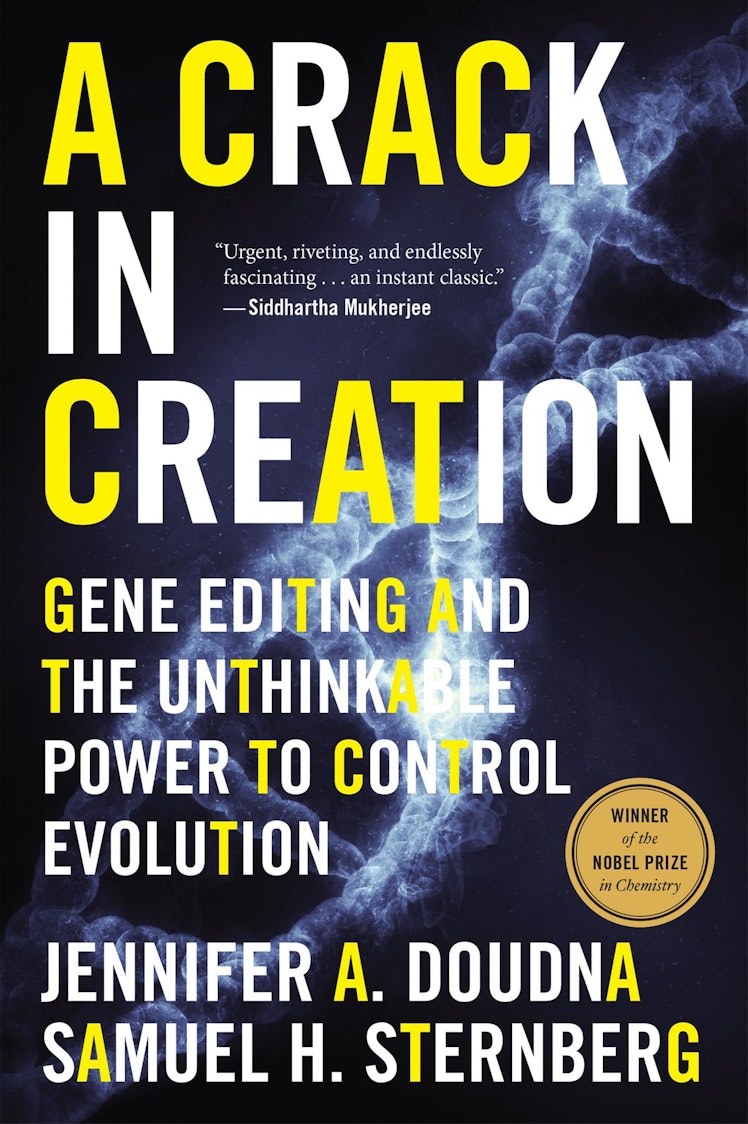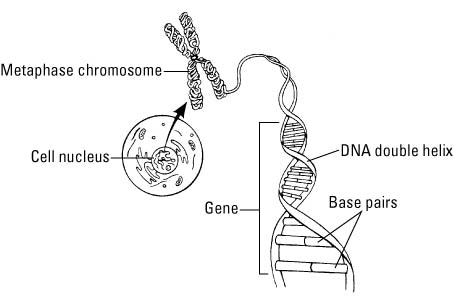Trending Assets
Top investors this month
Trending Assets
Top investors this month
A Crack In Creation: Chapter 1 (part 1)
I'm currently reading "A Crack in Creation" by Jennifer Doudna in order to deepen my knowledge of the gene editing space.
There's a 'Genomics Revolution' channel on Commonstock if you want to join: https://share.commonstock.com/share?invite=RqCajG

Chapter 1 - Cliff Notes
Here's an example of the power and promise of gene editing:
In 2013, scientists at the National Institutes of Health were dealing with a medical mystery. A patient we'll call Kim had a rare, painful, and potentially deadly immunodeficiency disease called WHIM syndrome. WHIM is caused by a tiny mutation- a single incorrect letter among some six billion total letters of one's DNA. This tiny transformation leaves victims profoundly susceptible to infection to human papillomavirus (HPV), which causes uncontrollable warts that cover the patient's skin and can eventually progress to cancer.
Early in life Kim had been diagnosed with this disorder, yet 50 years later, it seemed to have miraculously vanished from her system. How was this possible?
After a battery of tests, the scientists concluded that Kim experienced an uncommon and usually catastrophic event called chromothripsis- a phenomenon in which a chromosome suddenly shatters and then is repaired, leading to a massive rearrangement of the genes within it. The effects in the body are generally either trivial (if the damaged cell dies immediately) or dire (if the rearranged DNA inadvertently activates cancer-causing genes)
In Kim's body, though, chromothripsis allowed her mutated cell to be free of the gene causing WHIM syndrome. And that cell happened to also be a hematopoietic stem cell, a type of stem cell from which every kind of blood cell in the body originates and that has an almost unlimited potential to proliferate and self-renew. That cell had passed along its rearranged chromosome to all its daughter cells, eventually repopulating Kim's entire immune system with healthy new white blood cells that were free of the mutation.
The odds of being spontaneously cured of a genetic disease are miniscule. Most patients will never experience the natural miracle of having their genomes altered in exactly the right way, in the right kinds of cells, and in the right tissues. Natural gene editing remains an anomaly - some interesting medical cases involving a handful of patients who won the genetic lottery, nothing more.
But what if gene editing weren't only a spontaneous event? What if doctors had a way to fix harmful mutations?
To make this sort of technology possible, you need to understand the genome itself: what it is made of, how it was built, and most important, how it can be modified and manipulated.
The Genome
The genome refers to the entire set of genetic instructions found inside a cell. Mostly identical from cell to cell within any given organism save for the occasional mutation, the genome tells all living things how to grow, how to sustain themselves, and how to transmit genes to offspring.
Our intrinsic physical traits - eyesight, height, skin color, predisposition to disease, and so on- are the result of information encoded in our genomes.
The genome is made up of a molecule called deoxyribonucleic acid, or DNA, which is constructed of just four different building blocks. Known as nucleotides, these are the familiar letters of DNA: A, G, C, and T, shorthand for the chemical groups (also known as bases) of adenine, guanine, cytosine, and thymine that distinguish the four compounds. The letters of these molecules are connected in long single strands. Two of these strands come together to form the famous double-helix structure of DNA.

DNA is much like a secret language; each specific sequence of letters provides instructions to produce a particular protein inside the cell. The proteins then go on to carry out most of the critical functions in the body, like breaking down food, recognizing and destroying pathogens, and sensing light.
We know the genetic causes of many diseases thanks to the relatively recent advent of DNA sequencing, a process that enables scientists to read and record the contents of the human genome, letter by letter. Scientists have precisely identified well over four thousand different kinds of DNA mutations that can cause genetic disease.
DNA sequencing can tell individuals if they're at elevated risk of developing certain cancers, and it can help tailor specific treatments to best match the genetic backgrounds of different patients.
Furthermore, now that commercial DNA sequence analysis has gone mainstream and costs just a few hundred dollars per test (think $NVTA) , millions of individuals have opted to have their own genomes analyzed by simply dropping a saliva sample in the mail. The resulting explosion of data has helped researchers pinpoint significant associations between thousands of gene variants and a number of physical and behavioral traits.
Yet, while genome sequencing represents a huge development in the study of genetic disease, it is ultimately a diagnostic tool, not a form of treatment. It has allowed us to see how genetic diseases are written in the language of DNA, but it leaves us powerless to change that language. After all, it's one thing to learn how to read; it's quite another to learn how to write. For that, scientists need an entirely different set of tools.
Already have an account?